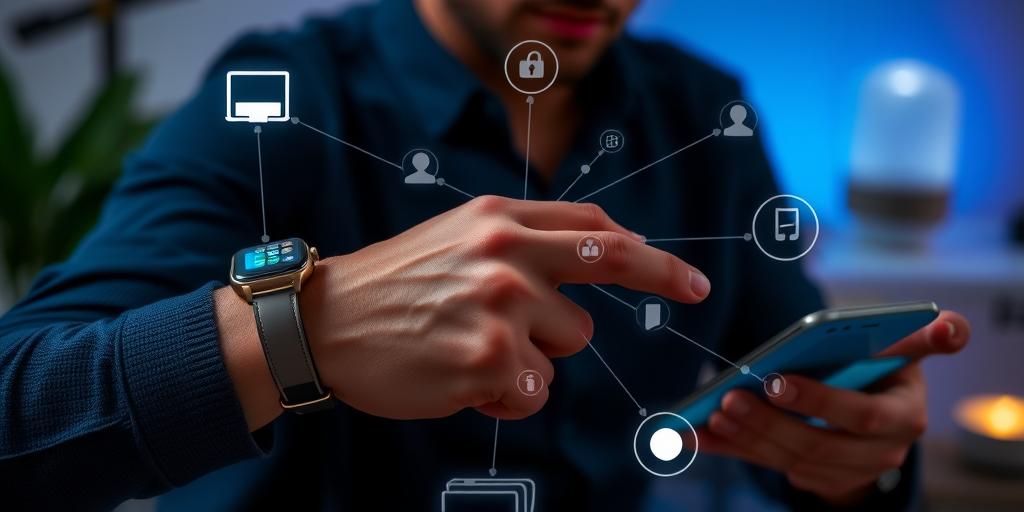The world is becoming increasingly interconnected with the rise of smart gadgets, devices that enhance our lives by connecting to the internet and leveraging technology to automate tasks, provide information, and improve our overall experience. From smart home devices like thermostats and security systems to wearable fitness trackers and voice assistants, smart gadgets have infiltrated almost every aspect of our daily routines.
The Rise of Smart Gadgets
Smart gadgets have gained immense popularity in recent years due to advancements in technology, increasing internet connectivity, and a growing demand for convenient and efficient solutions. The affordability of smart devices has also contributed to their widespread adoption. Today, smart gadgets are no longer a luxury but rather a necessity for many individuals looking to simplify their lives and embrace a more connected future.
Why Understanding Smart Gadgets is Important
As smart gadgets become increasingly prevalent, it’s crucial to understand their functionalities, benefits, and potential drawbacks. This knowledge empowers you to make informed decisions about which smart gadgets suit your needs and how to use them effectively. It also helps you navigate the evolving landscape of smart technology and stay ahead of the curve.
Types of Smart Gadgets
Smart gadgets encompass a wide range of devices, each catering to specific needs and functionalities. Here are some common categories:
Smart Home Devices
These gadgets automate and control aspects of your home, enhancing security, comfort, and energy efficiency. Examples include:
- Smart thermostats: Program and control your home’s temperature remotely.
- Smart lighting: Adjust lighting levels, schedules, and colors for personalized ambiance.
- Smart security systems: Monitor your home, receive alerts, and control locks remotely.
- Smart appliances: Control appliances like ovens, refrigerators, and washing machines remotely.
Wearable Technology
These gadgets are designed to be worn on your body and track personal data, providing insights into your health, fitness, and daily activities. Examples include:
- Fitness trackers: Monitor steps, heart rate, sleep patterns, and more.
- Smartwatches: Provide notifications, control music playback, and track fitness metrics.
- Smart glasses: Enhance vision, provide augmented reality experiences, and facilitate hands-free communication.
Smart Appliances
Beyond smart home devices, appliances like refrigerators, ovens, and washing machines are now incorporating smart technology. These features offer convenience, efficiency, and enhanced control:
- Remote control: Control appliances remotely via smartphone apps.
- Smart sensors: Monitor appliance performance, adjust settings based on usage, and prevent potential issues.
- Voice activation: Use voice commands to operate appliances.
Smart Assistants
These gadgets provide virtual assistance through voice commands and offer a range of functionalities, from setting reminders and playing music to controlling smart home devices and providing information. Examples include:
- Amazon Alexa: A voice-activated virtual assistant that integrates with various smart home devices and services.
- Google Assistant: A similar voice assistant with extensive functionality and integration with Google services.
- Apple Siri: Apple’s voice assistant available on iPhones, iPads, and other Apple devices.
Key Features of Smart Gadgets
Smart gadgets share common features that contribute to their functionality and capabilities:
Connectivity
Smart gadgets rely on internet connectivity to function and communicate with other devices. This enables remote control, data sharing, and access to cloud services.
Sensors and Data Collection
Many smart gadgets incorporate sensors that collect data about their surroundings or user behavior. This data is used to provide personalized experiences, enhance automation, and offer valuable insights.
Artificial Intelligence (AI)
AI plays a crucial role in many smart gadgets, enabling tasks like voice recognition, image analysis, and predictive analysis. AI algorithms help optimize performance, personalize experiences, and automate tasks.
User Interfaces
Smart gadgets typically feature intuitive user interfaces, often through smartphone apps or voice commands. These interfaces allow users to interact with the devices easily and access their functionalities.
Benefits of Using Smart Gadgets
Smart gadgets offer numerous benefits that can enhance our lives in various ways:
Convenience and Automation
Smart gadgets automate everyday tasks, freeing up time and effort. Setting reminders, controlling appliances remotely, and receiving personalized recommendations are just a few examples of how smart gadgets simplify our routines.
Enhanced Security and Safety
Smart home devices like security cameras and smart locks provide enhanced security for homes and businesses. Wearable technology can also contribute to safety by tracking location, providing emergency alerts, and offering fall detection.
Improved Health and Wellness
Wearable fitness trackers, smart scales, and health monitoring devices provide valuable insights into our health and wellness. This data can motivate us to adopt healthier habits and make informed decisions about our well-being.
Energy Efficiency
Smart home devices like thermostats and lighting systems can optimize energy consumption, reducing energy bills and minimizing environmental impact.
Considerations Before Buying Smart Gadgets
While smart gadgets offer numerous advantages, it’s essential to consider certain factors before investing in them:
Compatibility and Integration
Ensure that the smart gadgets you choose are compatible with your existing devices and operating systems. Consider how well they integrate with each other and your preferred smart home ecosystems.
Privacy and Security Concerns
Smart gadgets collect and transmit data, raising concerns about privacy and security. Research the device’s privacy policy, data encryption methods, and security features before purchasing.
Cost and Maintenance
Smart gadgets can range in price, so consider your budget and the ongoing costs of subscriptions, updates, and potential repairs.
Technical Expertise
Some smart gadgets require a certain level of technical expertise to set up and use. Evaluate your comfort level with technology and choose devices that align with your abilities.
The Future of Smart Gadgets
The world of smart gadgets continues to evolve rapidly, with advancements in technology driving exciting possibilities:
Advancements in AI and Machine Learning
AI and machine learning are becoming increasingly sophisticated, enabling smart gadgets to learn from user behavior, adapt to individual preferences, and offer more personalized and intuitive experiences.
Increased Interconnectivity and the Internet of Things (IoT)
The Internet of Things (IoT) is connecting a vast network of devices, enabling seamless communication and interaction between smart gadgets. This interconnectedness will lead to a more intelligent and automated environment.
Personalized and Adaptive Technologies
Smart gadgets will become more personalized and adaptive, learning from our individual preferences and routines to provide tailored experiences and enhance our overall well-being.
Smart gadgets have the potential to revolutionize the way we live, work, and interact with the world around us. By understanding the basics of smart gadgets, their benefits, and potential drawbacks, you can make informed choices about which devices to incorporate into your life and harness their power to enhance your daily routines and create a more connected and convenient future.




